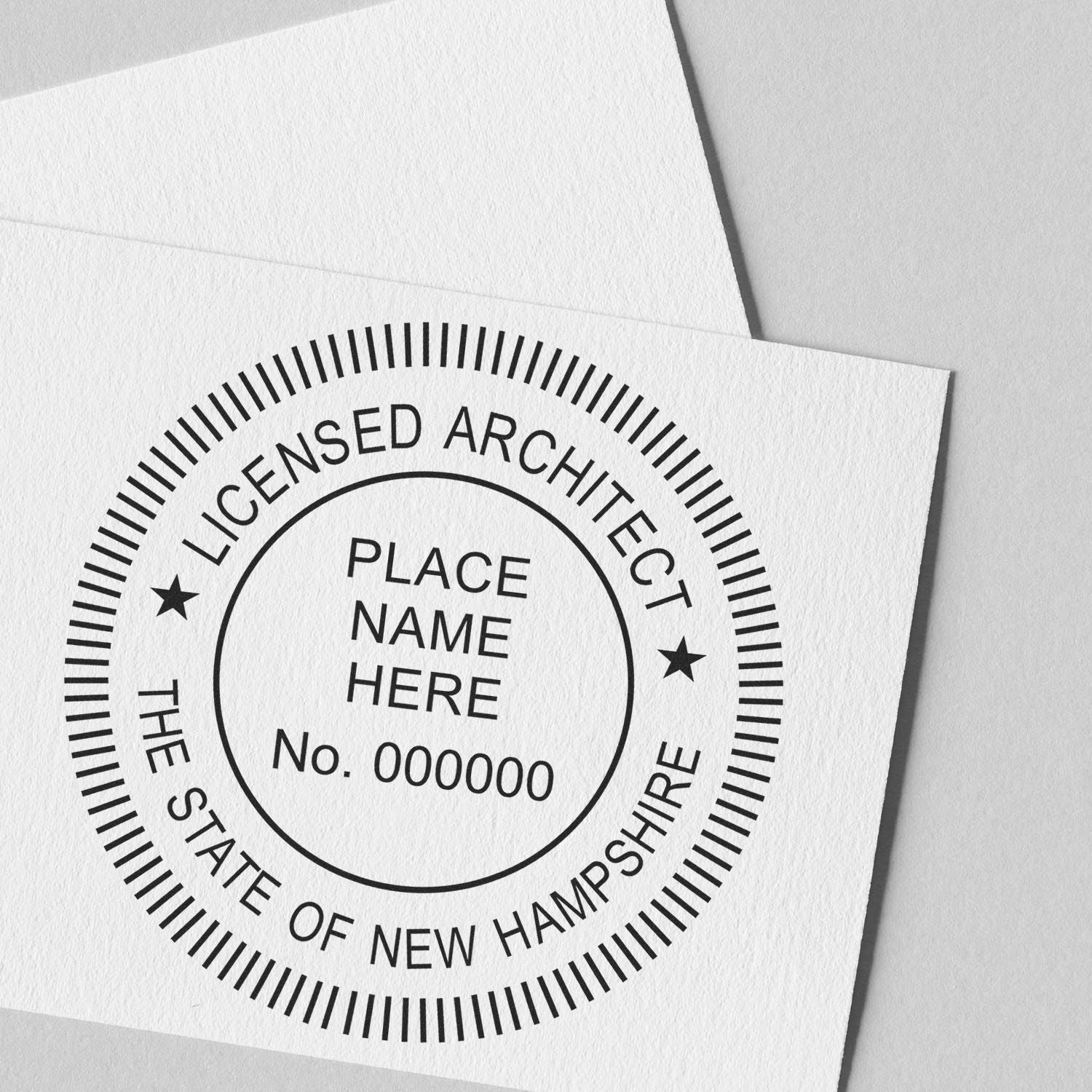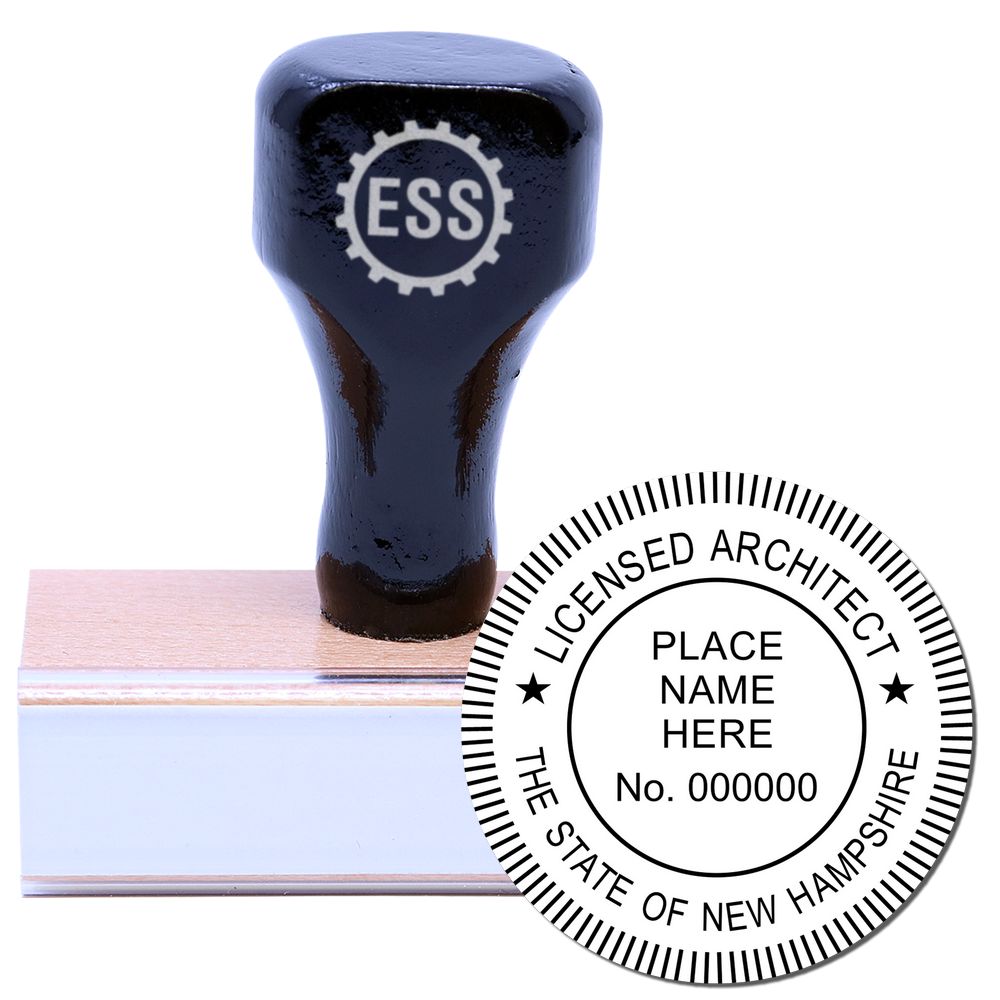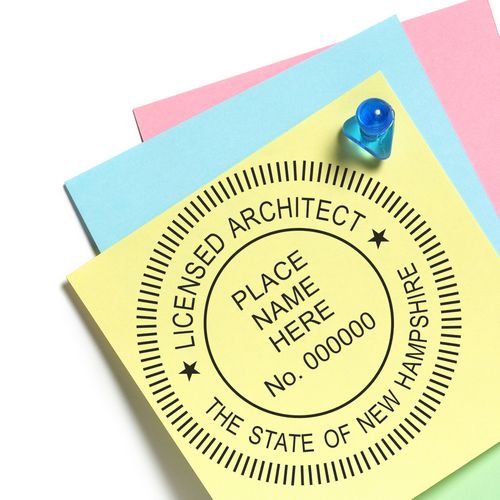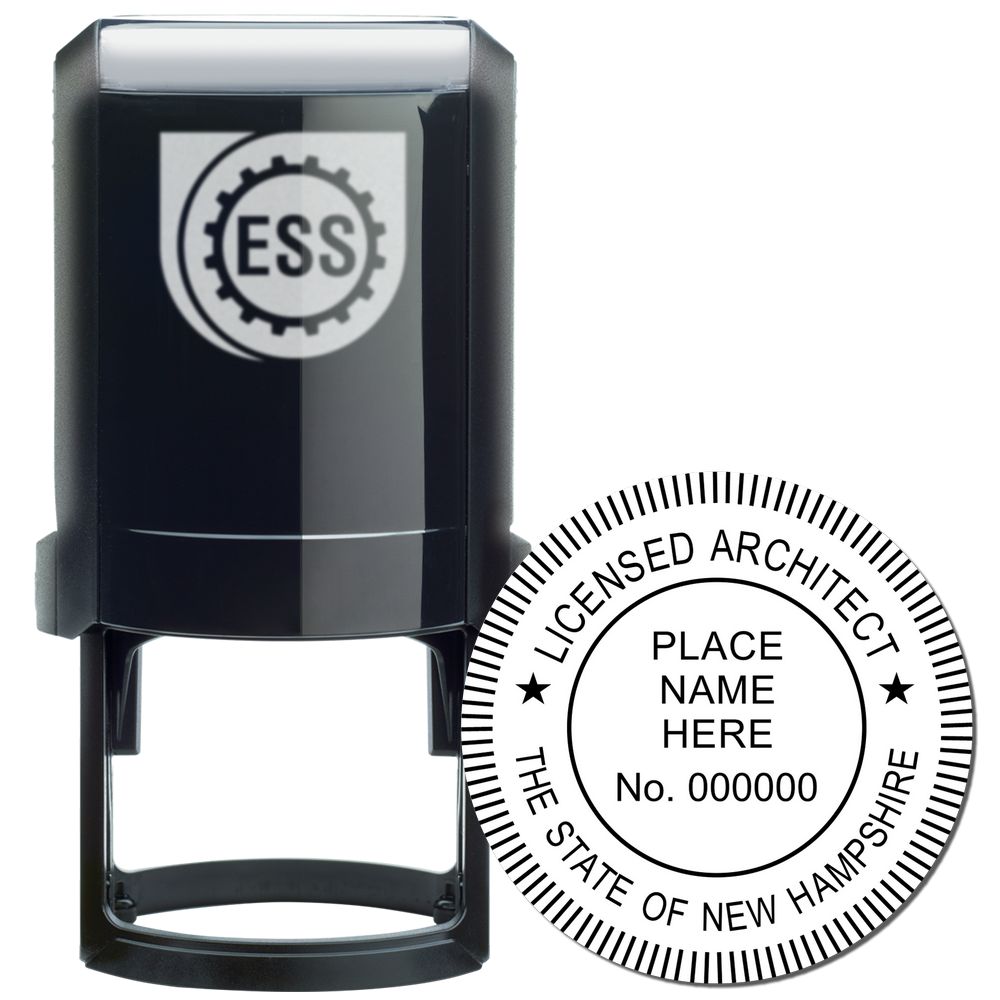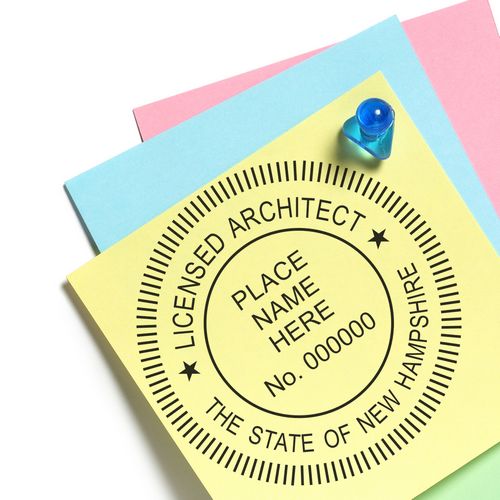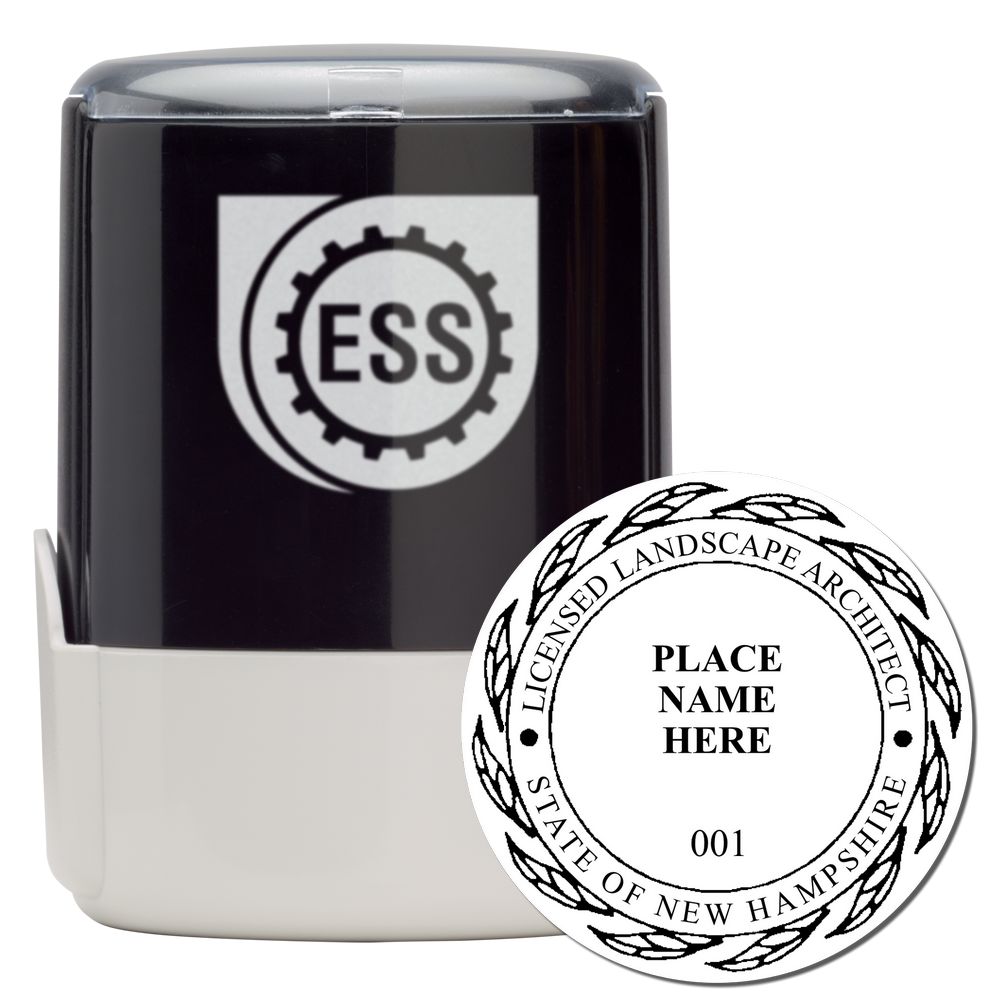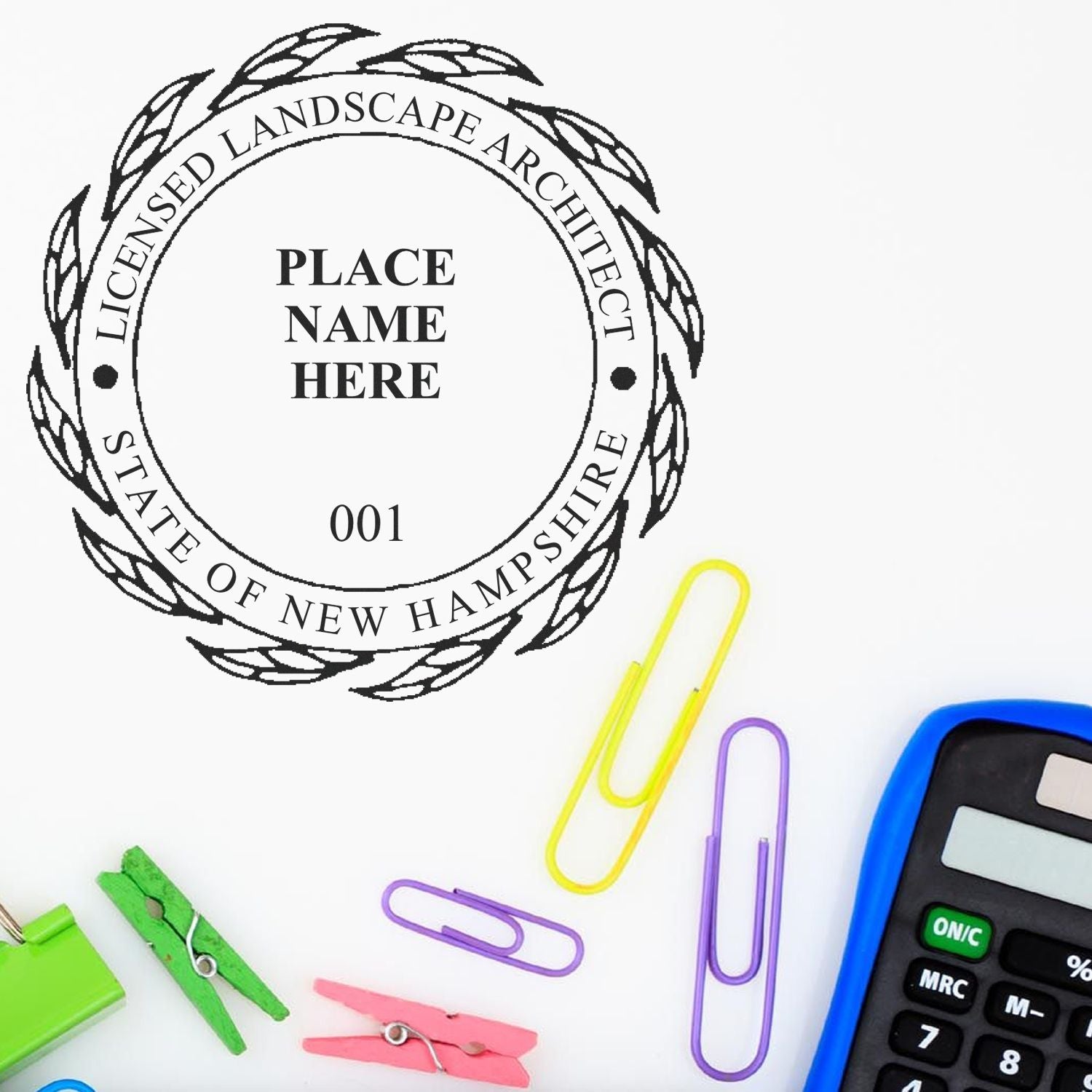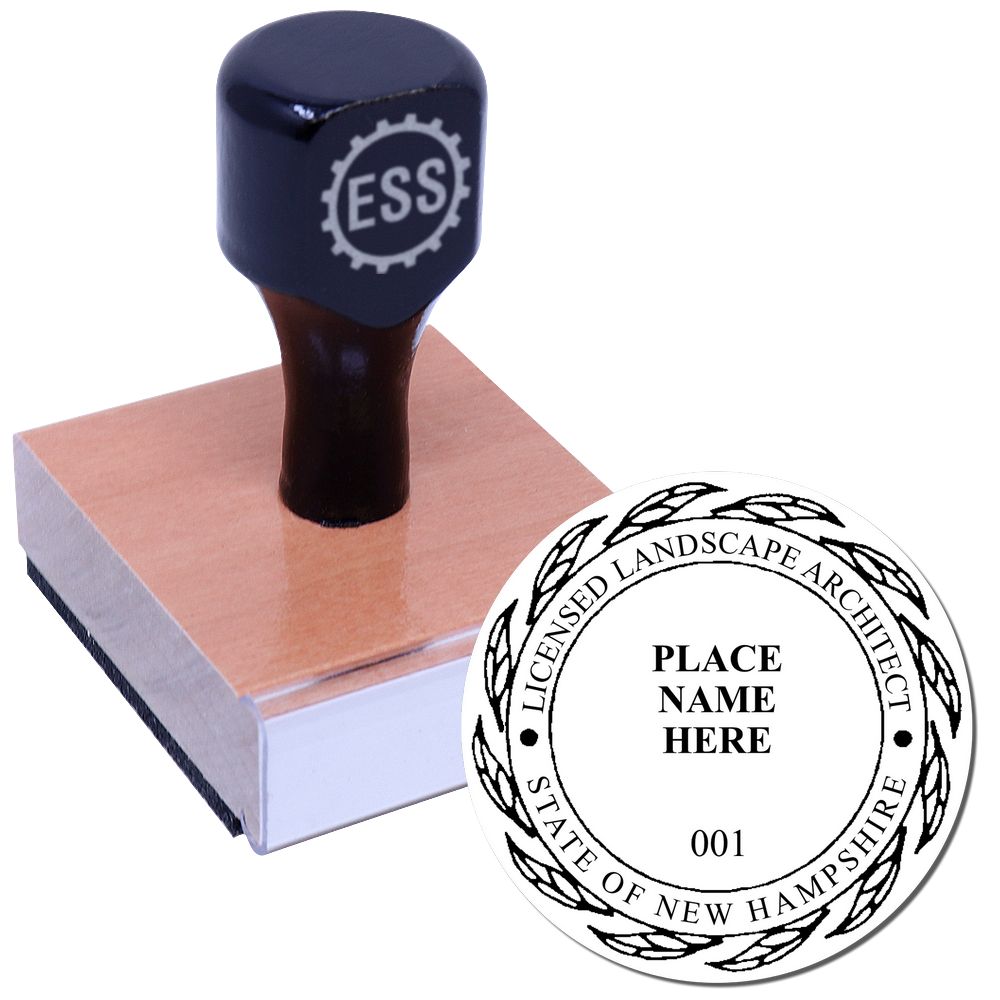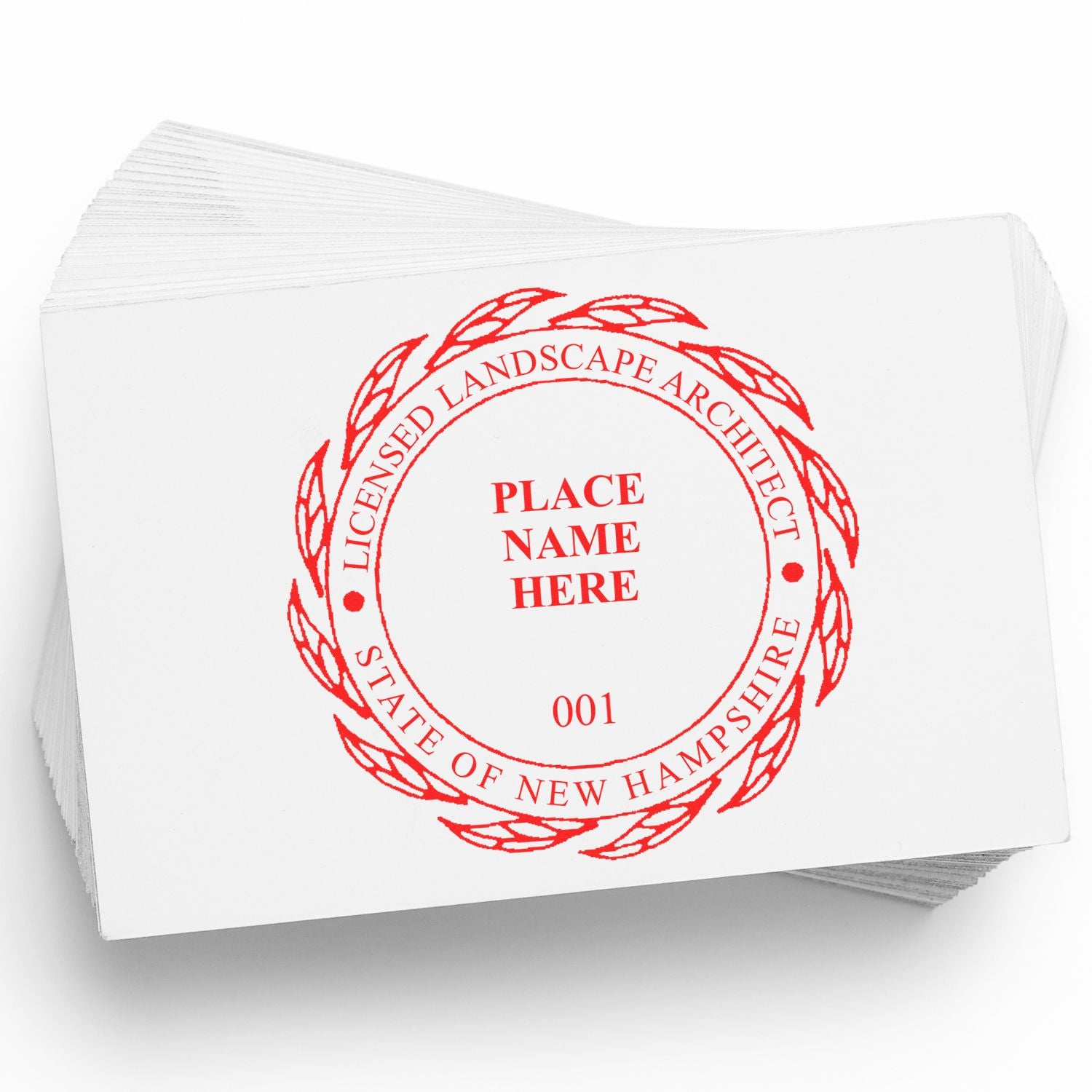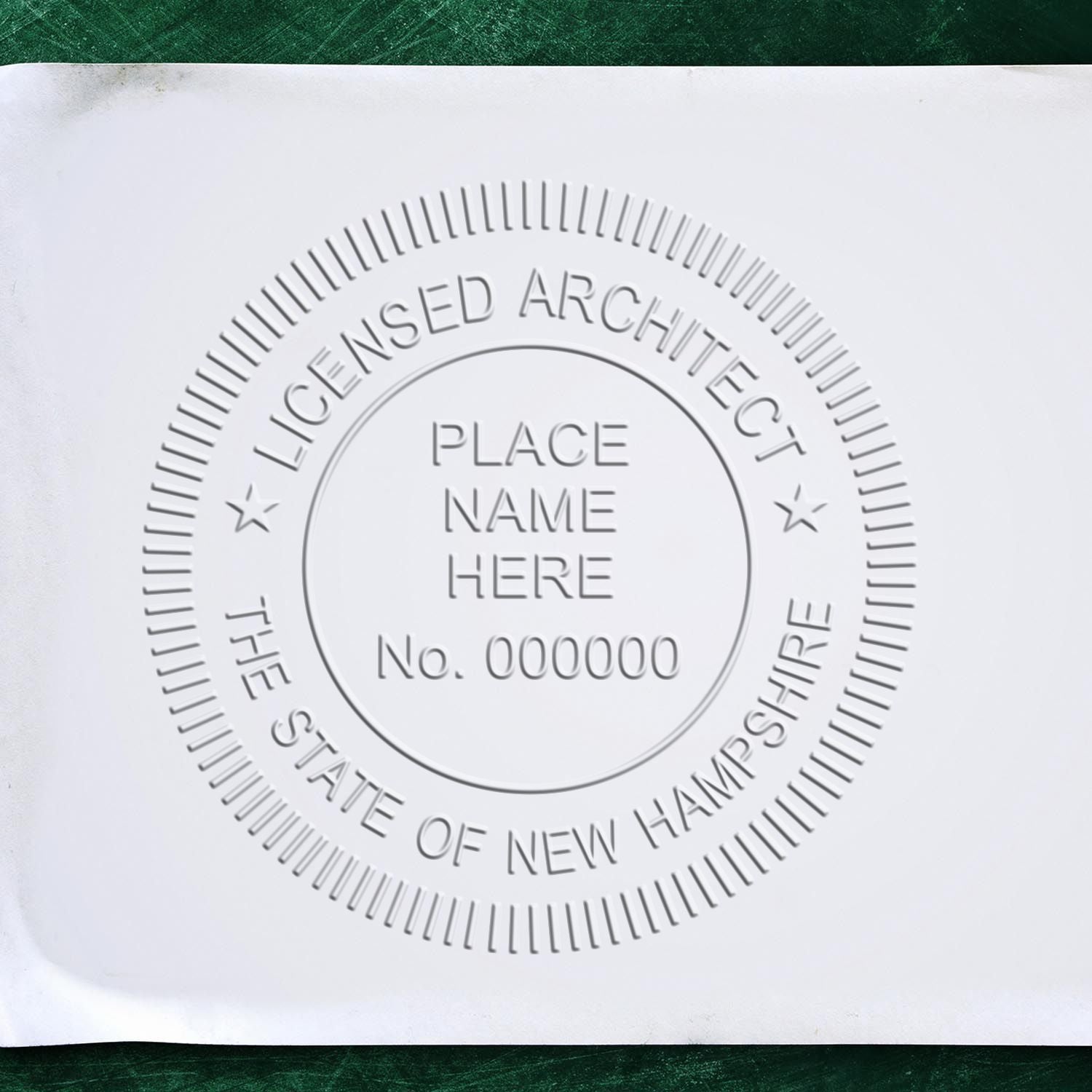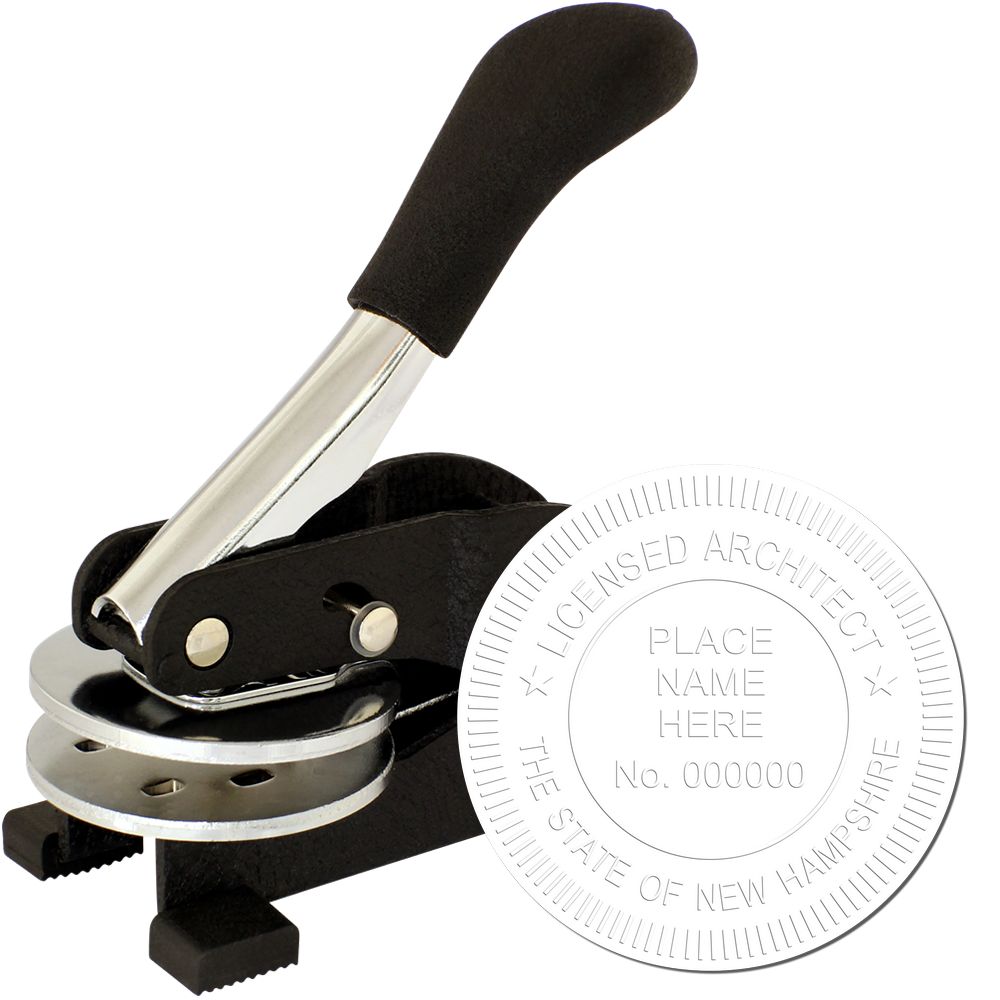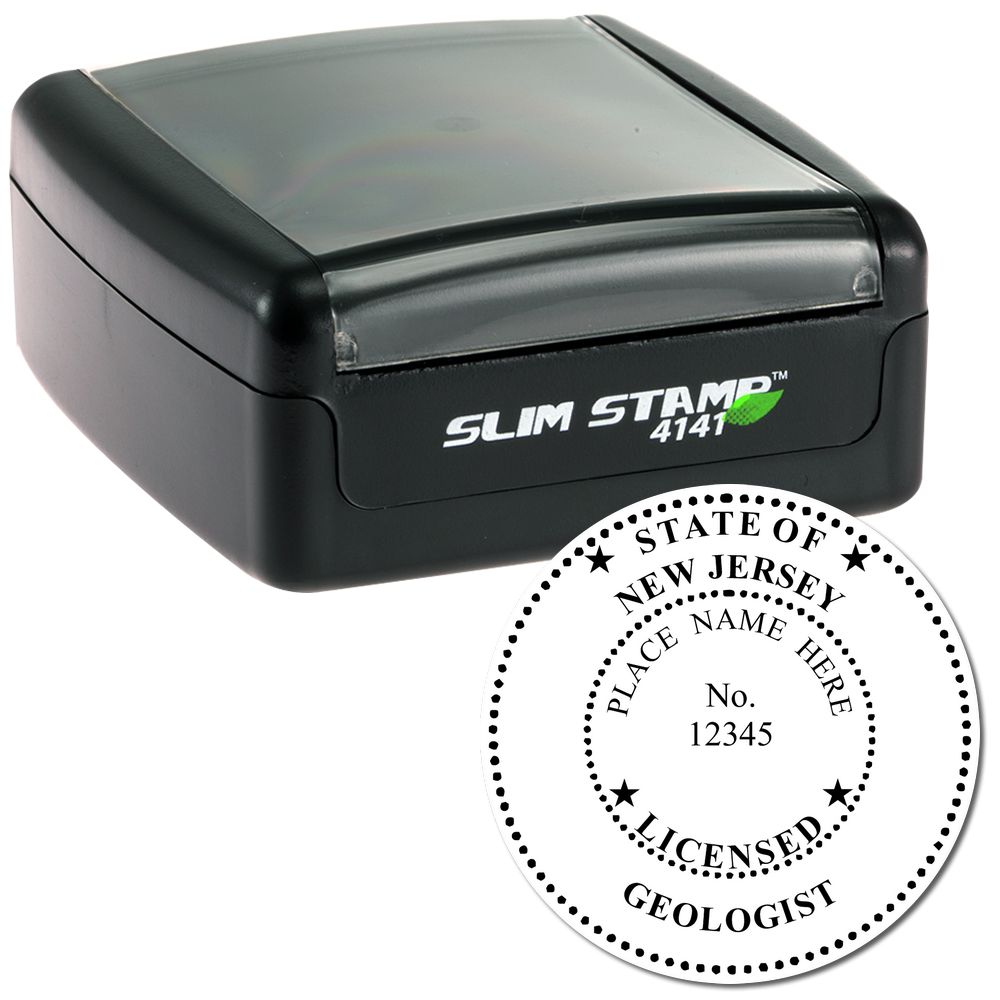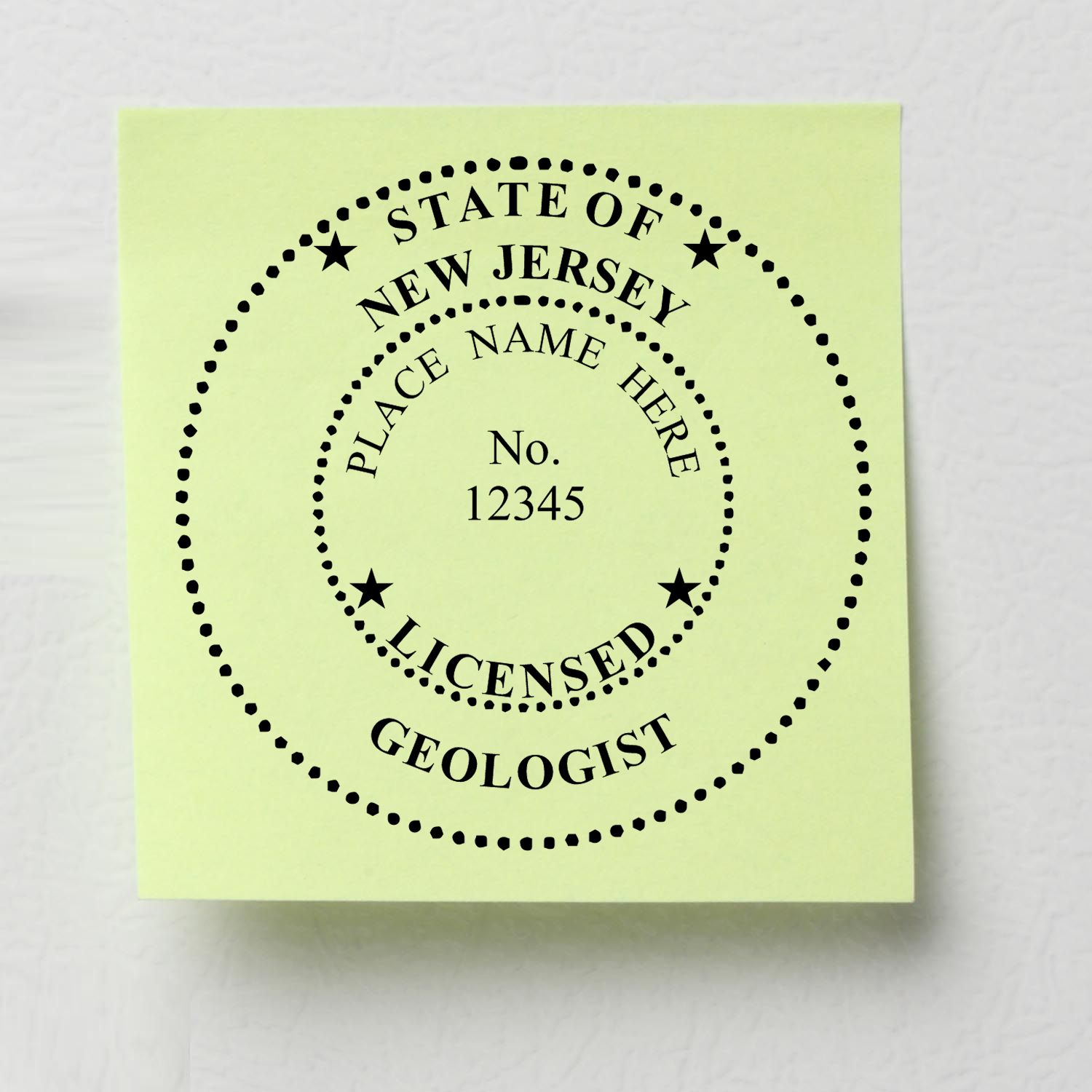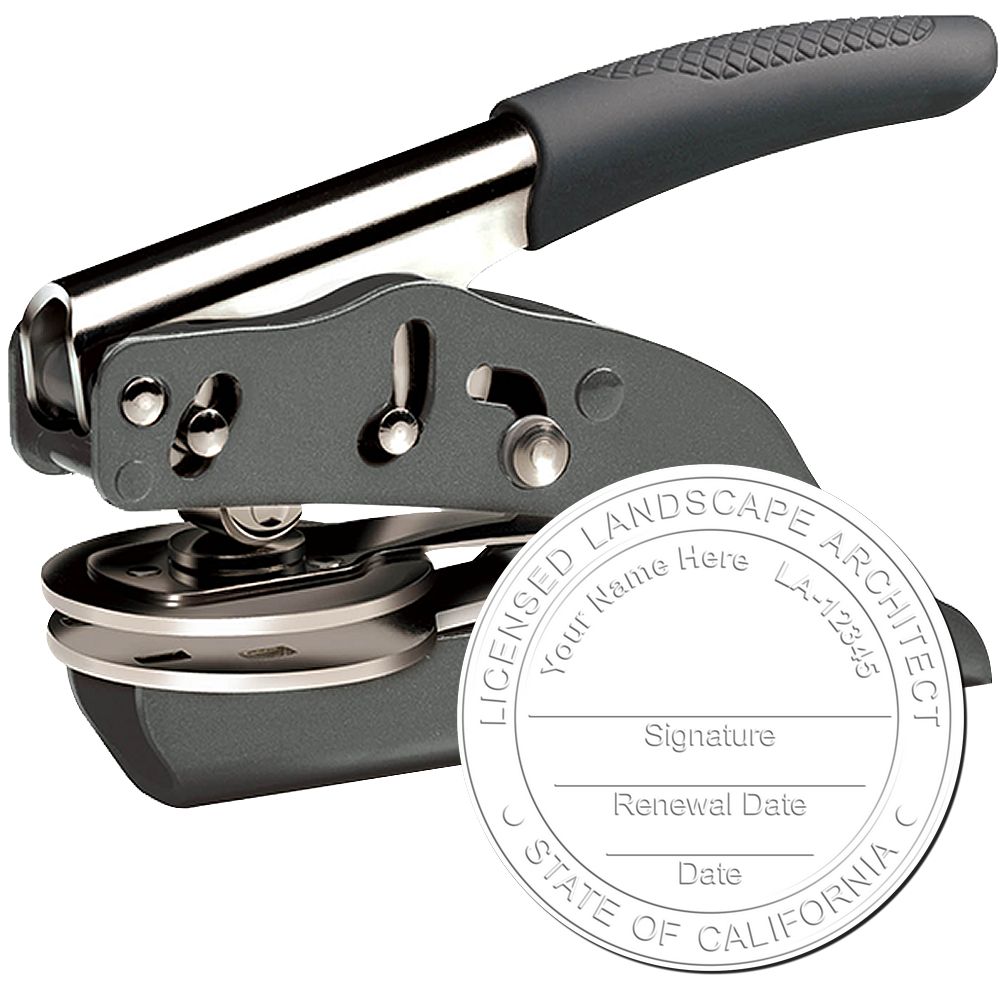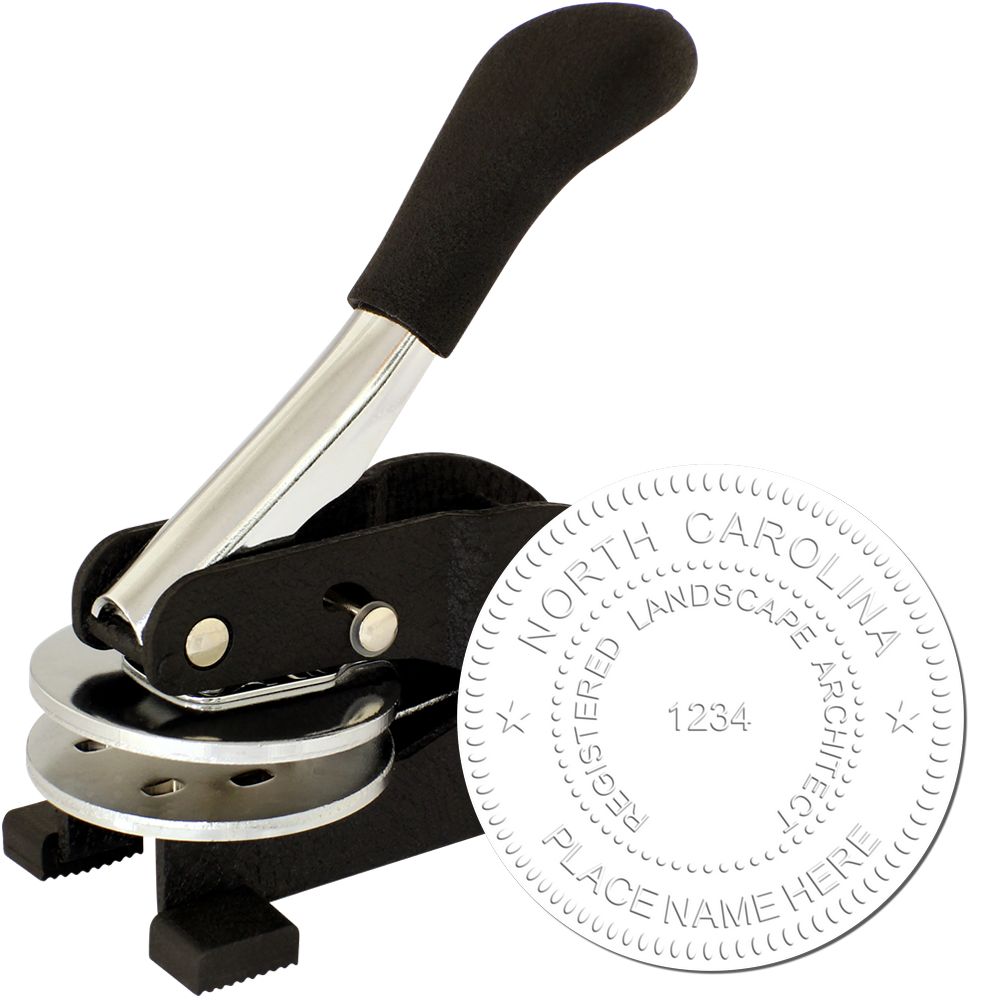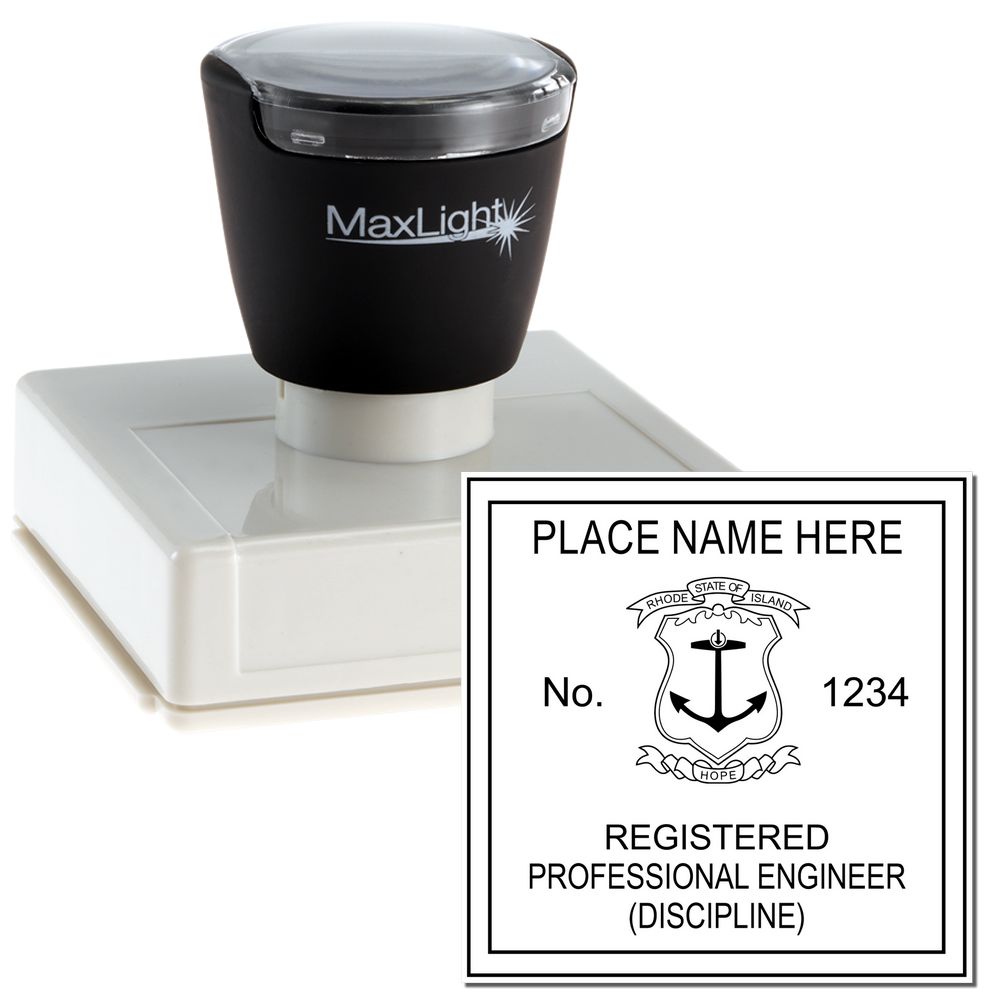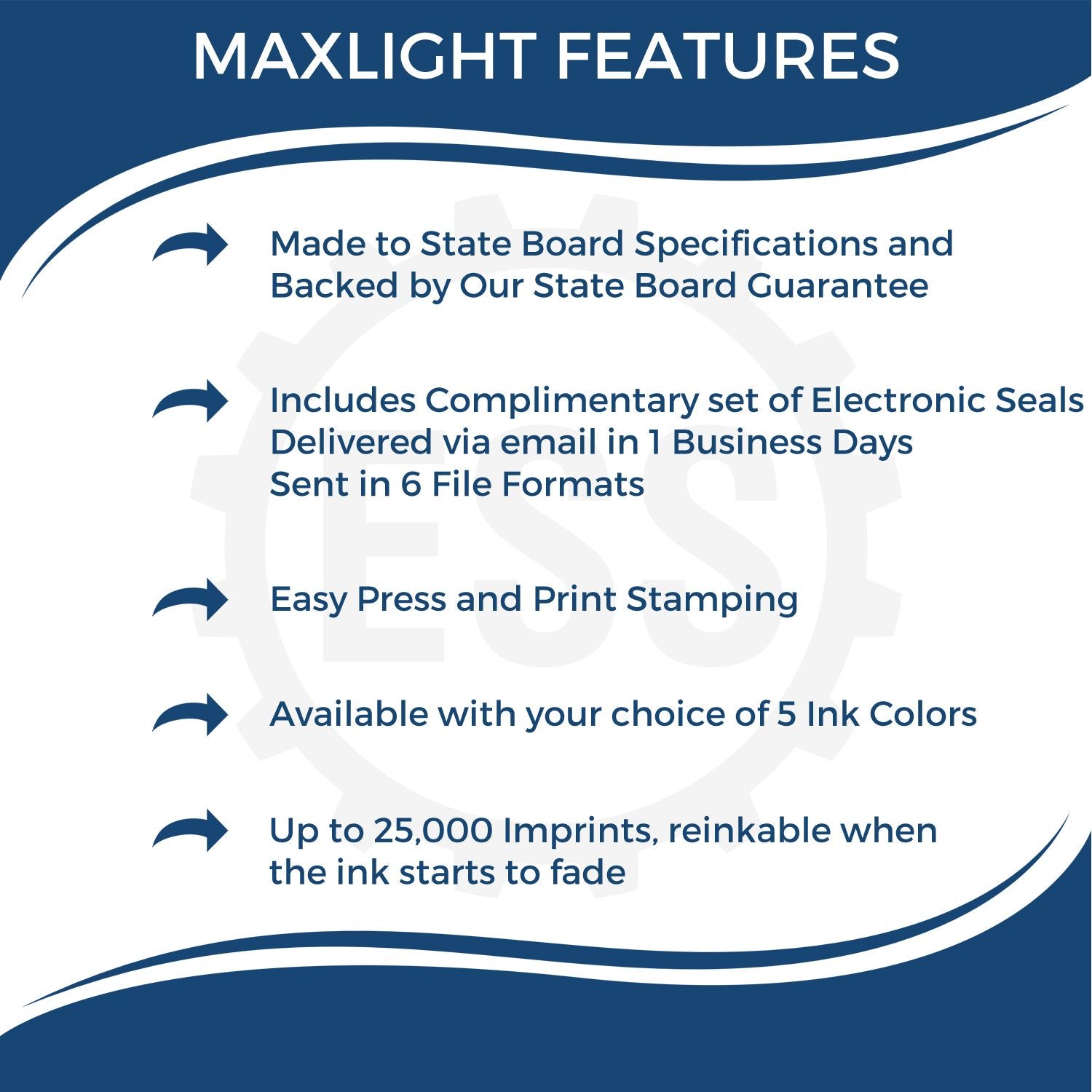The Importance of Architect Seals
Architect seals play a vital role in the architectural profession, serving as a symbol of credibility and authority. In this section, we will explore what an architect seal is and why it holds such significance in the field of architecture.
What is an Architect Seal?
An architect seal, also known as an architect stamp or architect embosser, is a tool used by licensed architects to authenticate their professional work. It typically consists of a unique design or emblem that represents the architect's identity and registration information. The seal is imprinted onto architectural drawings, plans, and other official documents to signify the architect's involvement and approval.
The architect seal serves as a visual representation of an architect's professional competence and adherence to industry standards. It distinguishes the work of a licensed architect from that of non-professionals, providing clients, regulatory bodies, and the public with confidence in the architectural designs and plans.
Why is an Architect Seal Important?
The use of an architect seal is essential for several reasons. Firstly, it ensures compliance with legal requirements and regulations. In many jurisdictions, including New Hampshire, architects are required by law to affix their seal on architectural documents to demonstrate that they have reviewed and approved the designs. This helps to safeguard public safety and welfare by ensuring that architectural projects meet the necessary standards.
Secondly, an architect seal serves as a means of professional identification. By affixing the seal on architectural documents, architects are able to clearly communicate their involvement in the project. This is particularly important in situations where multiple professionals are collaborating on a project, as it helps to attribute responsibility and accountability to the architect.
Furthermore, an architect seal enhances the credibility and reputation of an architect. It signifies that the architect is duly licensed and authorized to practice architecture, instilling trust in clients and stakeholders. It also provides a level of assurance that the architectural plans or drawings have been reviewed and approved by a qualified professional.
In New Hampshire, architects must adhere to specific guidelines and requirements regarding the use of architect seals. For more information on these guidelines, you can refer to our article on New Hampshire architect stamp guidelines.
By understanding the significance of architect seals, architects can appreciate their role in ensuring professionalism, accountability, and compliance within the architectural industry.
Understanding New Hampshire Architect Seals
To practice architecture in the state of New Hampshire, architects must meet certain requirements and obtain a New Hampshire architect seal. This section will delve into the requirements for New Hampshire architects and the purpose of the New Hampshire architect seal.
Requirements for New Hampshire Architects
Becoming a licensed architect in New Hampshire involves completing several steps and meeting specific criteria. Here are the typical requirements for architects in the state:
-
Education: Architects must hold a professional degree in architecture from an accredited program. This typically involves completing a Bachelor's or Master's degree in architecture.
-
Experience: Aspiring architects must gain practical experience in the field. This is typically fulfilled through participation in an internship or an architect training program. The exact number of required experience hours can vary depending on the program and the state's requirements.
-
Examination: Architects are required to pass the Architect Registration Examination (ARE). This comprehensive exam assesses an architect's knowledge and skills in various areas of architecture, such as construction documents, project management, site planning, and more.
-
Licensure: After completing the education, experience, and examination requirements, architects can apply for licensure from the New Hampshire Board of Architects. This involves submitting the necessary application forms, fees, and supporting documentation.
Save 20%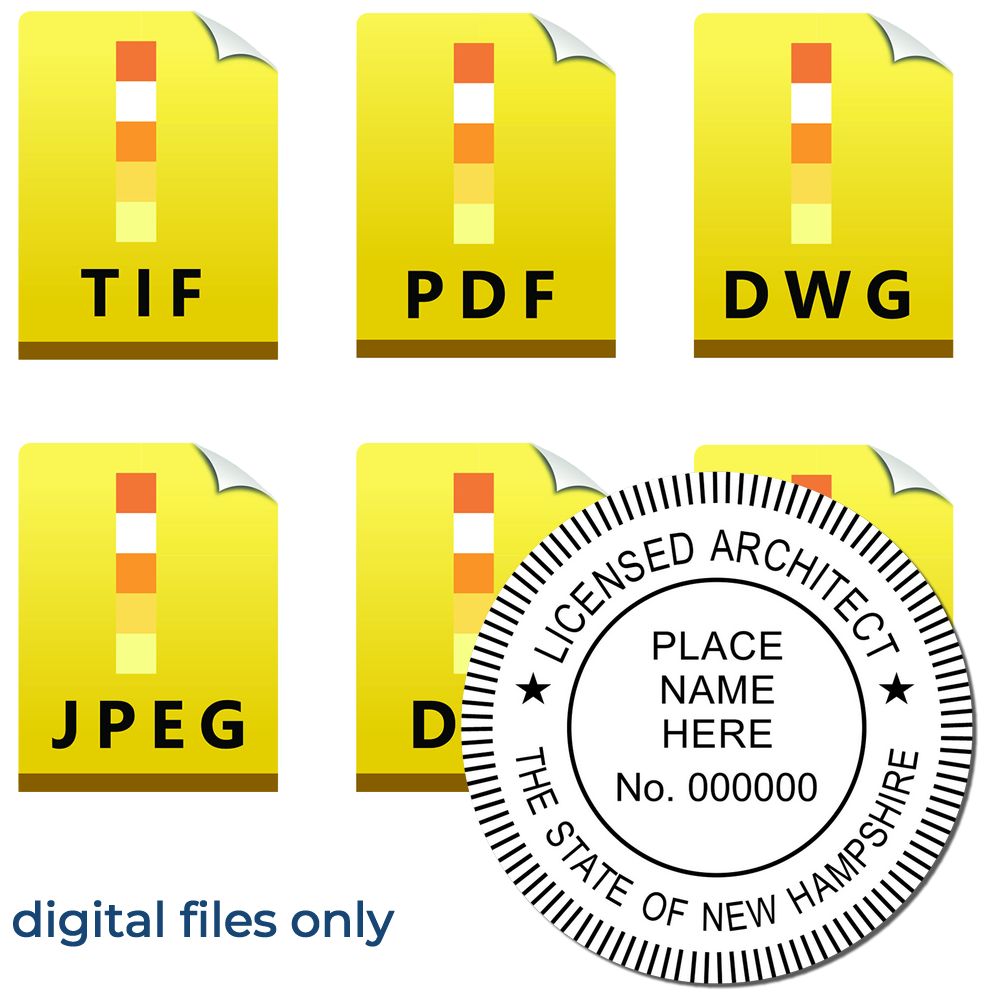
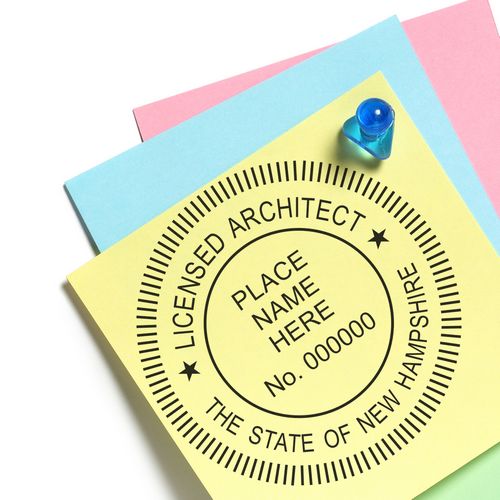 Digital New Hampshire Architect Stamp, Electronic Seal for New Hampshire Architect3008ARC-NHSale price$20.00 Regular price$25.00Save 15%
Digital New Hampshire Architect Stamp, Electronic Seal for New Hampshire Architect3008ARC-NHSale price$20.00 Regular price$25.00Save 15%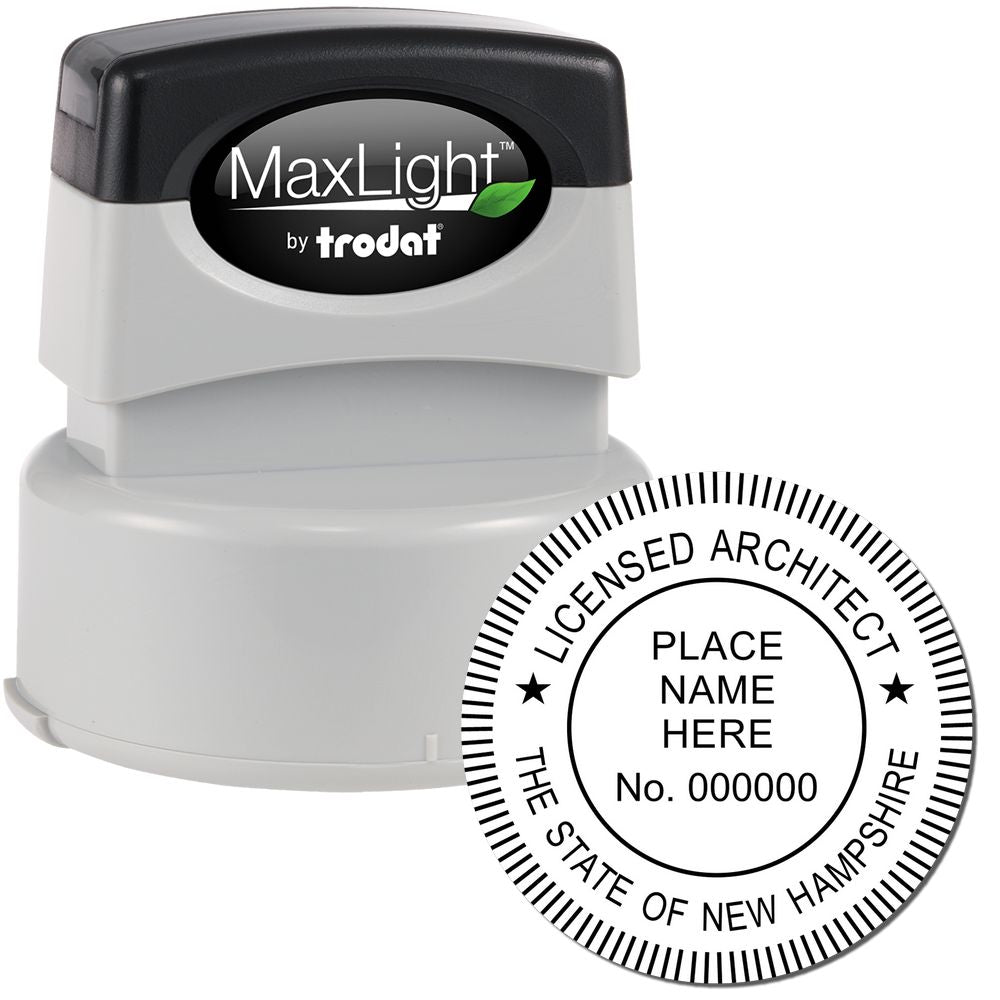
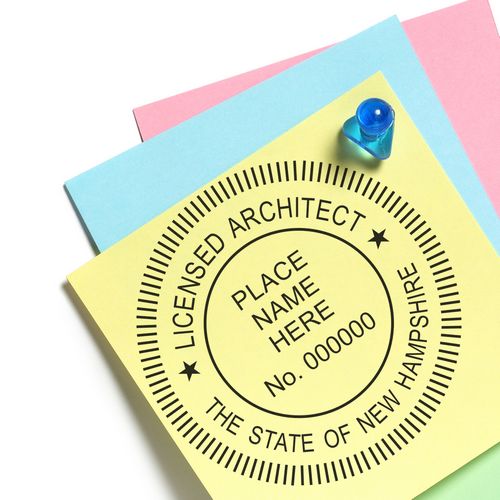 Premium MaxLight Pre-Inked New Hampshire Architectural Stamp3021ARC-NHSale price$46.95 Regular price$55.00
Premium MaxLight Pre-Inked New Hampshire Architectural Stamp3021ARC-NHSale price$46.95 Regular price$55.00
Once licensed, architects are eligible to obtain their New Hampshire architect seal, which serves as a professional identifier and signifies their authority to practice architecture in the state.
Purpose of the New Hampshire Architect Seal
The New Hampshire architect seal is an essential tool for architects practicing in the state. This seal serves multiple purposes, including:
-
Legal Recognition: The architect seal signifies that the individual is a licensed architect in the state of New Hampshire. It is a legal requirement to affix the architect seal on architectural documents, such as plans, drawings, and specifications, to indicate the architect's involvement and responsibility for the project.
-
Building Code Compliance: The architect seal ensures that architectural documents comply with the building codes and regulations of New Hampshire. It signifies that the plans and designs meet the necessary standards and requirements set forth by the state.
-
Professional Accountability: By affixing the architect seal, architects take responsibility for the accuracy and integrity of their work. It demonstrates their commitment to upholding professional standards and ethics in their architectural practice.
Architects must adhere to the guidelines and regulations set by the New Hampshire Board of Architects when using their architect seal. For more information on the specific guidelines for using the New Hampshire architect seal, refer to our article on New Hampshire architect stamp guidelines.
Understanding the requirements for New Hampshire architects and the purpose of the New Hampshire architect seal is crucial for architects practicing in the state. By obtaining and properly using the architect seal, architects can demonstrate their qualifications, comply with regulations, and maintain professional accountability in their architectural practice.
Design and Elements of the New Hampshire Architect Seal
When it comes to the design and elements of the New Hampshire Architect Seal, there are specific format and design specifications that architects need to adhere to. Additionally, the seal must contain required information as mandated by the state of New Hampshire.
Format and Design Specifications
The New Hampshire Architect Seal must meet certain format and design specifications to ensure its authenticity and compliance with state regulations. The seal should have a round shape and a diameter of 1.75 inches. The outer edge of the seal should be plain and unadorned.
The center of the seal should include the words "STATE OF NEW HAMPSHIRE" along the top, and "ARCHITECT" along the bottom, both in uppercase letters. Between these two lines, the architect's name and license number should be displayed. The font size should be clear and legible, with a minimum height of 1/8 inch.
Architects must ensure that the design of the seal is clean and professional, with no additional decorative elements or embellishments. The focus should be on the required information and the simplicity of the design.
Required Information on the Seal
The New Hampshire Architect Seal must include specific information that is essential for identification and verification purposes. The following information is required to be present on the seal:
-
Architect's Name: The architect's full legal name should be included on the seal. This ensures that the seal is linked to the specific architect responsible for the project.
-
Architect's License Number: The architect's license number, issued by the New Hampshire Board of Architects, must be clearly displayed on the seal. This unique identifier helps in confirming the architect's credentials and verifying their authorization to practice in the state.
By including the required information on the New Hampshire Architect Seal, architects provide a clear and verifiable representation of their professional identity. This not only ensures compliance with state regulations but also instills confidence in clients and regulatory bodies.
To obtain a New Hampshire Architect Seal that meets the necessary design and information requirements, architects can refer to reputable vendors who specialize in providing official architect seals. To learn more about the guidelines and regulations surrounding the use of architect seals in New Hampshire, visit our article on new hampshire architect stamp guidelines.

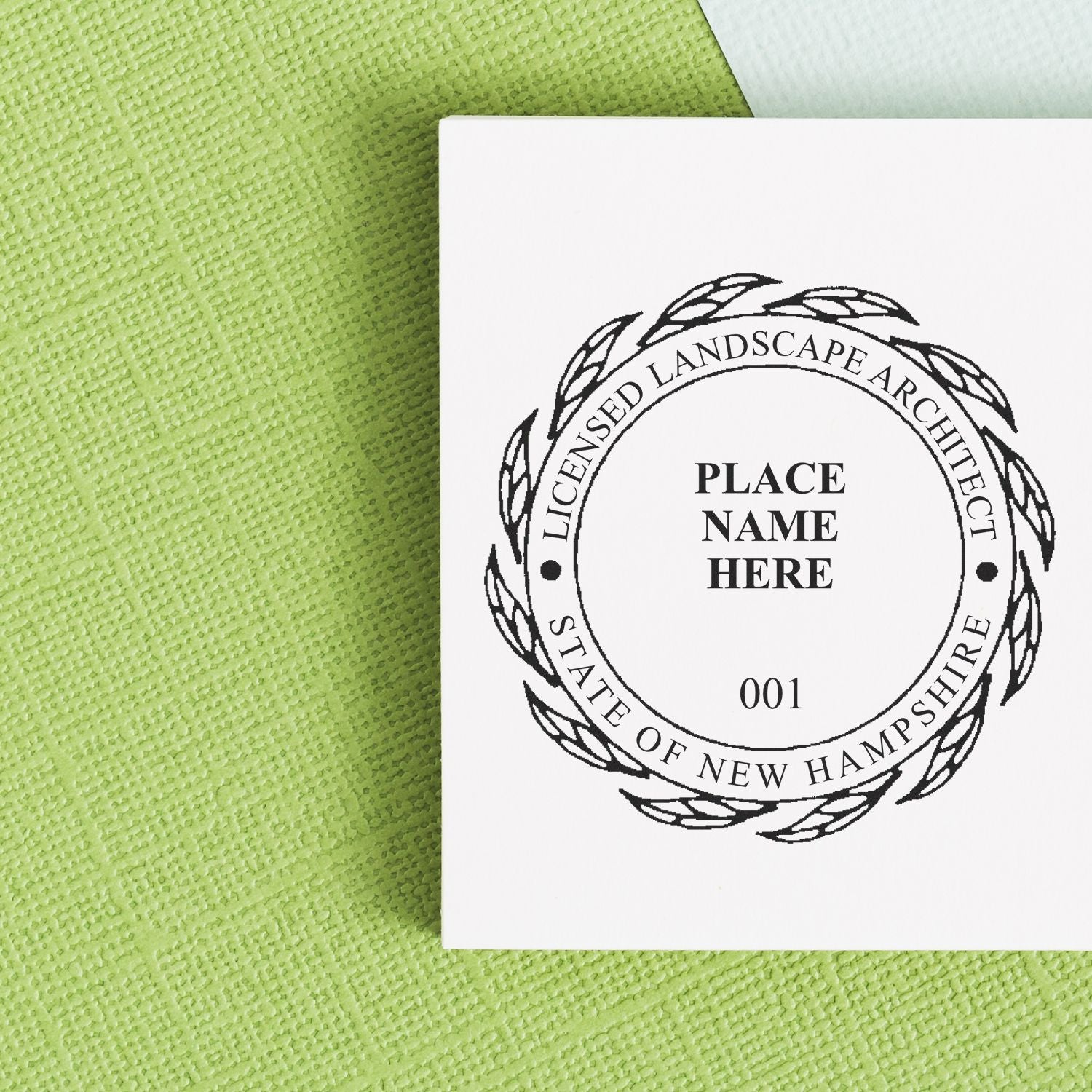

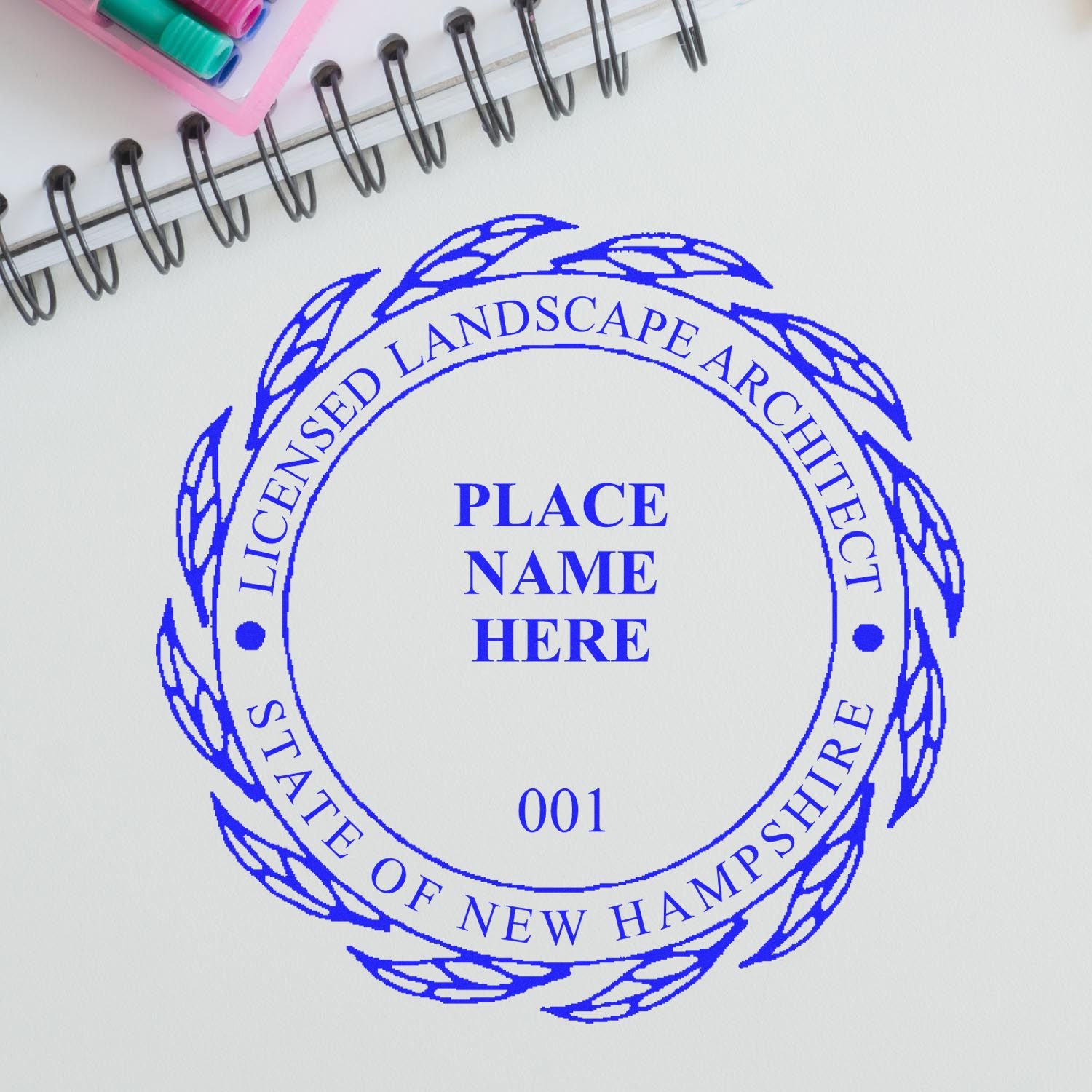
Remember, proper usage and care of the New Hampshire Architect Seal are vital to maintaining its integrity and effectiveness. Architects should familiarize themselves with the guidelines for using the seal, as well as the recommended maintenance and replacement procedures.
Obtaining a New Hampshire Architect Seal
To legally practice architecture in the state of New Hampshire, architects are required to obtain an architect seal. This seal serves as a professional identification mark and signifies the architect's authority and responsibility for the work they produce. In this section, we will discuss the process for obtaining the seal and where architects can purchase it.
Process for Obtaining the Seal
The process for obtaining a New Hampshire architect seal involves several steps to ensure that architects meet the necessary requirements. Here is an overview of the process:
-
Meet the Eligibility Requirements: Architects must first meet the eligibility criteria set by the New Hampshire Board of Architects. This typically includes obtaining the required education, completing the necessary work experience, and passing the relevant examinations. For detailed information on the specific requirements, architects should refer to the guidelines provided by the board.
-
Submit an Application: Once eligible, architects need to submit an application to the New Hampshire Board of Architects. The application will require architects to provide their personal information, educational background, work experience, and any other documentation required by the board.
-
Pay the Fee: Architects are required to pay the designated fee along with their application. The fee covers the processing and evaluation of the application.
-
Application Review: The New Hampshire Board of Architects will review the application, verifying the provided information and ensuring that all requirements have been met. This process may take some time, and architects should be prepared to wait for the board's decision.
-
Approval and Issuance: If the application is approved, architects will receive notification from the board, granting them permission to obtain their architect seal. Architects should follow the instructions provided by the board to complete the process and receive their seal.
Where to Purchase the Seal
Once architects have received approval from the New Hampshire Board of Architects, they can proceed to purchase their architect seal. There are several reputable vendors that provide New Hampshire architect seals, and architects can choose the one that best suits their preferences and requirements. It's important to ensure that the vendor complies with the guidelines set by the board and provides high-quality seals.
Architects can find information about purchasing a New Hampshire architect seal through various channels, including online marketplaces, office supply stores, and specialized stamp vendors. It is recommended to choose a vendor that offers customizable options to include the required information on the seal. For more details on the guidelines for New Hampshire architect stamps, architects can refer to our article on new hampshire architect stamp guidelines.
By following the proper process and obtaining the New Hampshire architect seal from a reputable vendor, architects can ensure that they are in compliance with the state's regulations and are ready to practice their profession with authority and responsibility.
Proper Use and Care of the New Hampshire Architect Seal
To maintain the integrity and professionalism of architectural documents, it is essential for architects to understand the proper use and care of the New Hampshire architect seal. Adhering to guidelines ensures that the seal is used correctly and consistently across projects.
Guidelines for Using the Seal
When using the New Hampshire architect seal, architects must follow specific guidelines to ensure compliance with state regulations. These guidelines include:
-
Placement: The architect seal should be placed in a prominent and visible location on architectural drawings, plans, or specifications. It should not obscure any critical information or details.
Save 14%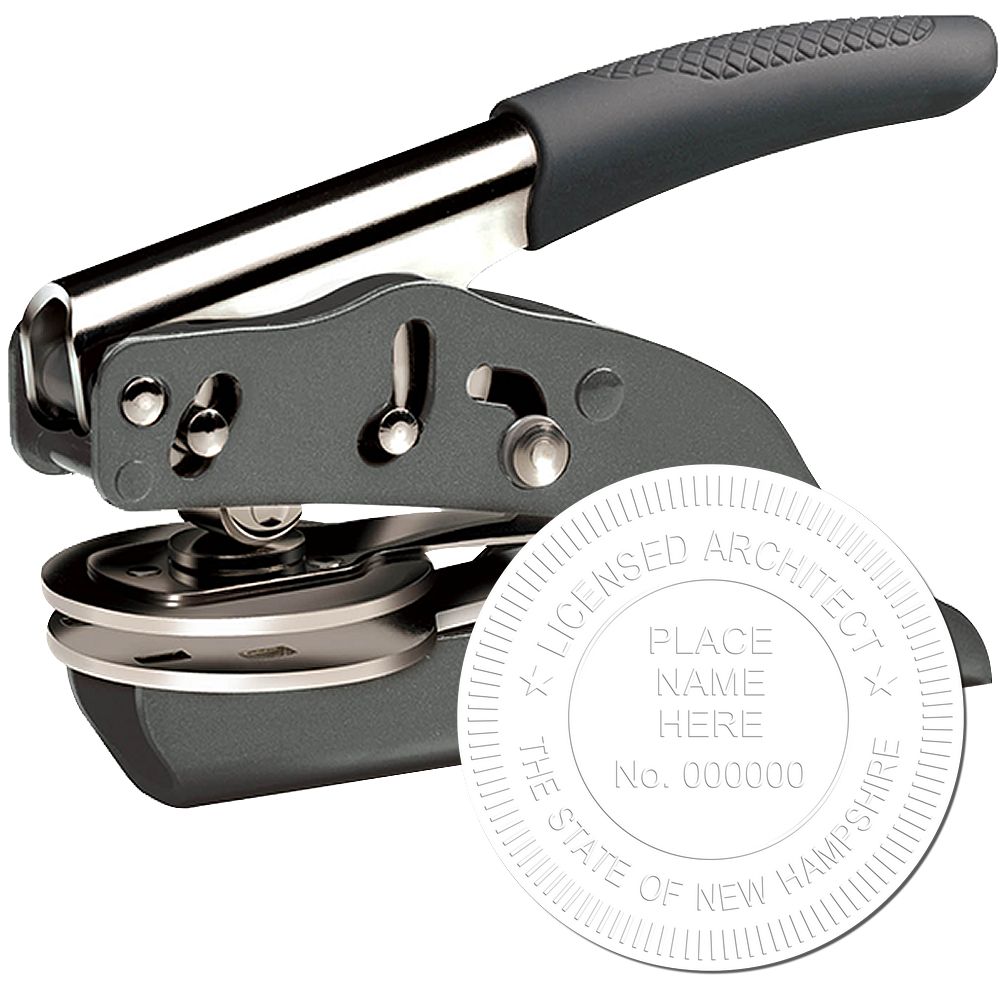
 State of New Hampshire Architectural Seal Embosser3001ARC-S-NHSale price$44.95 Regular price$52.00Save 7%
State of New Hampshire Architectural Seal Embosser3001ARC-S-NHSale price$44.95 Regular price$52.00Save 7%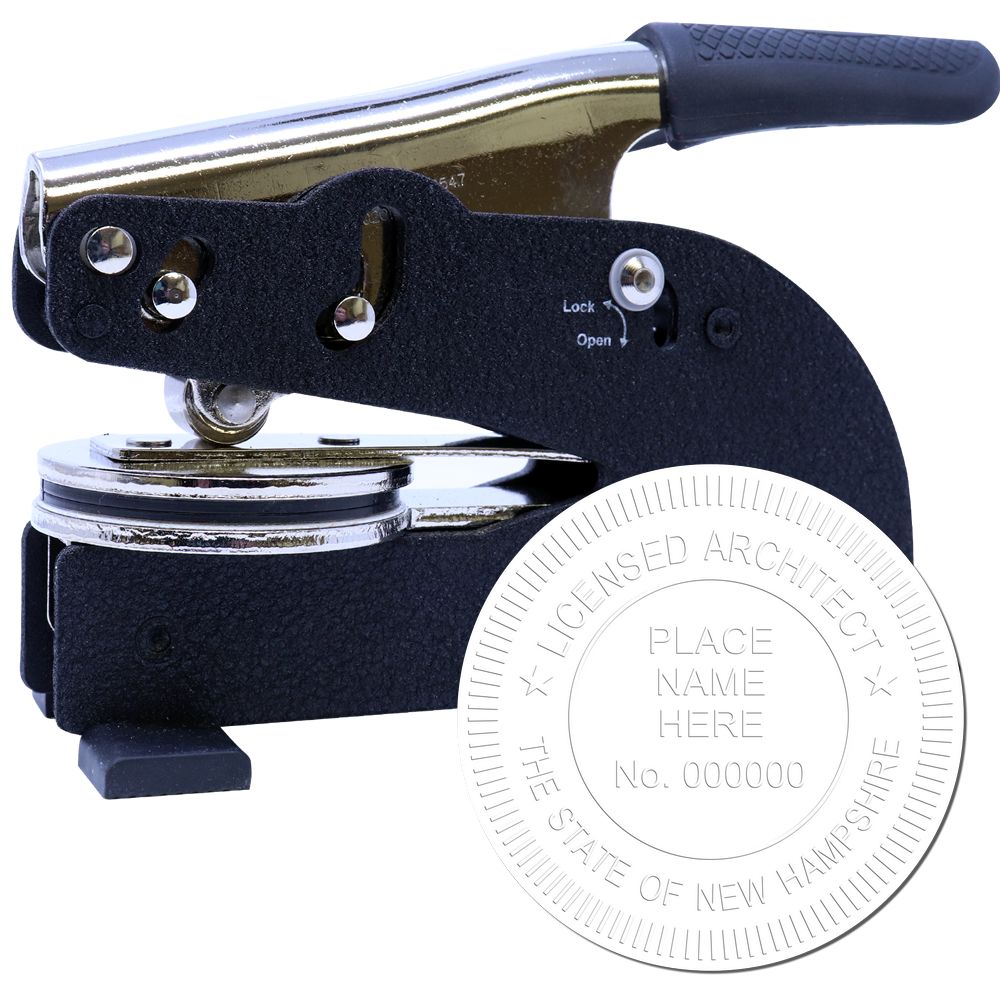
 State of New Hampshire Long Reach Architectural Embossing Seal3022ARC-NHSale price$129.95 Regular price$140.00
State of New Hampshire Long Reach Architectural Embossing Seal3022ARC-NHSale price$129.95 Regular price$140.00 -
Size and Legibility: The seal must be legible and clearly visible, even after printing or reproduction. It should be of sufficient size to ensure legibility, typically no smaller than 1.5 inches in diameter.
-
Ink Color: The seal should be applied using black ink or a color that provides high contrast against the background. This ensures that the seal stands out and is easily identifiable.
-
Seal Embosser: Architects may choose to use a seal embosser in addition to or instead of an inked seal. The embossed seal should be clear and legible, without causing damage to the document.
-
Seal Impression: The seal impression should be complete and accurate, displaying all required information as specified by the New Hampshire Board of Architects. This includes the architect's name, license number, and the words "Registered Architect."
For more detailed guidelines on the usage of the New Hampshire architect seal, architects can refer to the New Hampshire architect stamp guidelines.
Maintenance and Replacement of the Seal
To ensure the longevity and accuracy of the New Hampshire architect seal, architects must properly maintain and replace it as needed. Here are some key considerations:
-
Storage: When not in use, the architect seal should be stored in a protective case or pouch to prevent damage to the seal impression. This helps to preserve its integrity and legibility.
-
Cleaning: Regularly clean the seal to remove any ink residue or debris that may affect the quality of the seal impression. Use a soft cloth or tissue to gently wipe the seal surface.
-
Replacement: Over time, the architect seal may wear out or become damaged. It is crucial to monitor the condition of the seal and replace it when necessary. A worn-out seal may result in an incomplete or illegible impression, which can invalidate architectural documents.
Architects can purchase a new New Hampshire architect seal from authorized vendors or online platforms. Ensure that the replacement seal adheres to the format and design specifications outlined by the New Hampshire Board of Architects.
By following the guidelines for using and caring for the New Hampshire architect seal, architects can uphold professional standards and ensure the accuracy and validity of their architectural documents.
About ESS
At Engineer Seal Stamps, we pride ourselves on being the makers of high-quality custom rubber stamps, professional seals, and notary stamps. Our commitment to providing exceptional products and outstanding customer service is evident in everything we do. As industry leaders, we understand the importance of creating reliable stamps that meet your exact requirements and specifications.
We offer a variety of options to ensure our customers receive the exact product they need. Our team of highly skilled professionals works diligently to ensure we provide a range of state board guarantees on each of our products. These guarantees give you peace of mind knowing that you are receiving a reliable, efficient and trustworthy engineering seal stamp or notary stamp. Moreover, our team is committed to providing an unparalleled quick turnaround time on all of our products. This ensures that you receive your customized stamps in a timely manner, allowing you to proceed with your projects or business operations without any delays.
At Engineer Seal Stamps, we take pride in our exceptional customer service and commitment to quality. Our knowledgeable and friendly customer service representatives are always here to answer any of your questions or concerns. We understand that the needs of every business and individual differ, and we work hard to meet and exceed your expectations with our highly customizable stamp products. Choose Engineer Seal Stamps for all your custom rubber stamp, professional seal, and notary stamp needs to experience our superb customer service, superior quality, and fast turnaround time.

